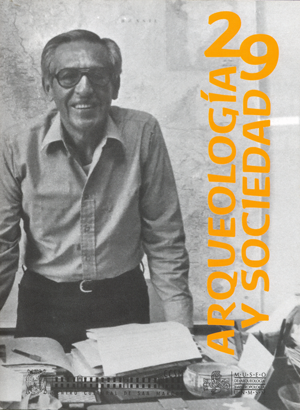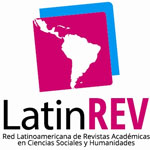THE QUEROS AND THE COLONIAL IMAGINARY ANDINA
DOI:
https://doi.org/10.15381/arqueolsoc.2015n29.e12238Keywords:
Colonial quero wooden cups (16th-18th Century A.D.), Colonial Andean imaginary, Medieval Bestiary.Abstract
The article treats about the pictorial-thematic transformation suffered in the polychromatic quero wooden cups –llimpisccaqueros- as result of the Spanish colonization in the South American Andes from 16th century A.D. to the 18th century A.D., in special: it will focus in the figurative, semantic and contents impact of the European classic and Renaissance imaginaries (of the Medieval Bestiary fabulous creatures) in the construction of Colonial Andean imaginary painted and looked on the“vasos de palo”. In effect the Francisco Pizarro’s hosts arrival in the Andes (in 1532 A.D.) means, from a pictorial standpoint, the advent of different techniques, conventions and visual signifiers proceeded to the principal European plastics art of the epoch (the Renaissance and Mannerism principally). Thus, the local fabulous figures based in European classic and Renaissance esthetic models drawing on the Colonial llimpisccaqueros (as sirens, centaurs, among others) attempted to fill the symbolic and ceremonial vacuum left by the annihilation of the local huacas of inca appearance, on purpose to the Spanish colonization.Downloads
Published
Issue
Section
License
Copyright (c) 2015 Manuel Antonio Lizárraga Ibáñez

This work is licensed under a Creative Commons Attribution-NonCommercial-ShareAlike 4.0 International License.
THE AUTHORS RETAIN THEIR RIGHTS:
a. The authors retain their trademark and patent rights, and also on any process or procedure described in the article.
b. The authors retain the right to share, copy, distribute, perform and publicly communicate the article published in the Arqueología y Sociedad (for example, place it in an institutional repository or publish it in a book), with an acknowledgment of its initial publication in the Arqueología y Sociedad.
c. The authors retain the right to make a subsequent publication of their work, to use the article or any part of it (for example: a compilation of their works, notes for conferences, thesis, or for a book), provided that they indicate the source. of publication (authors of the work, journal, volume, number and date).
















